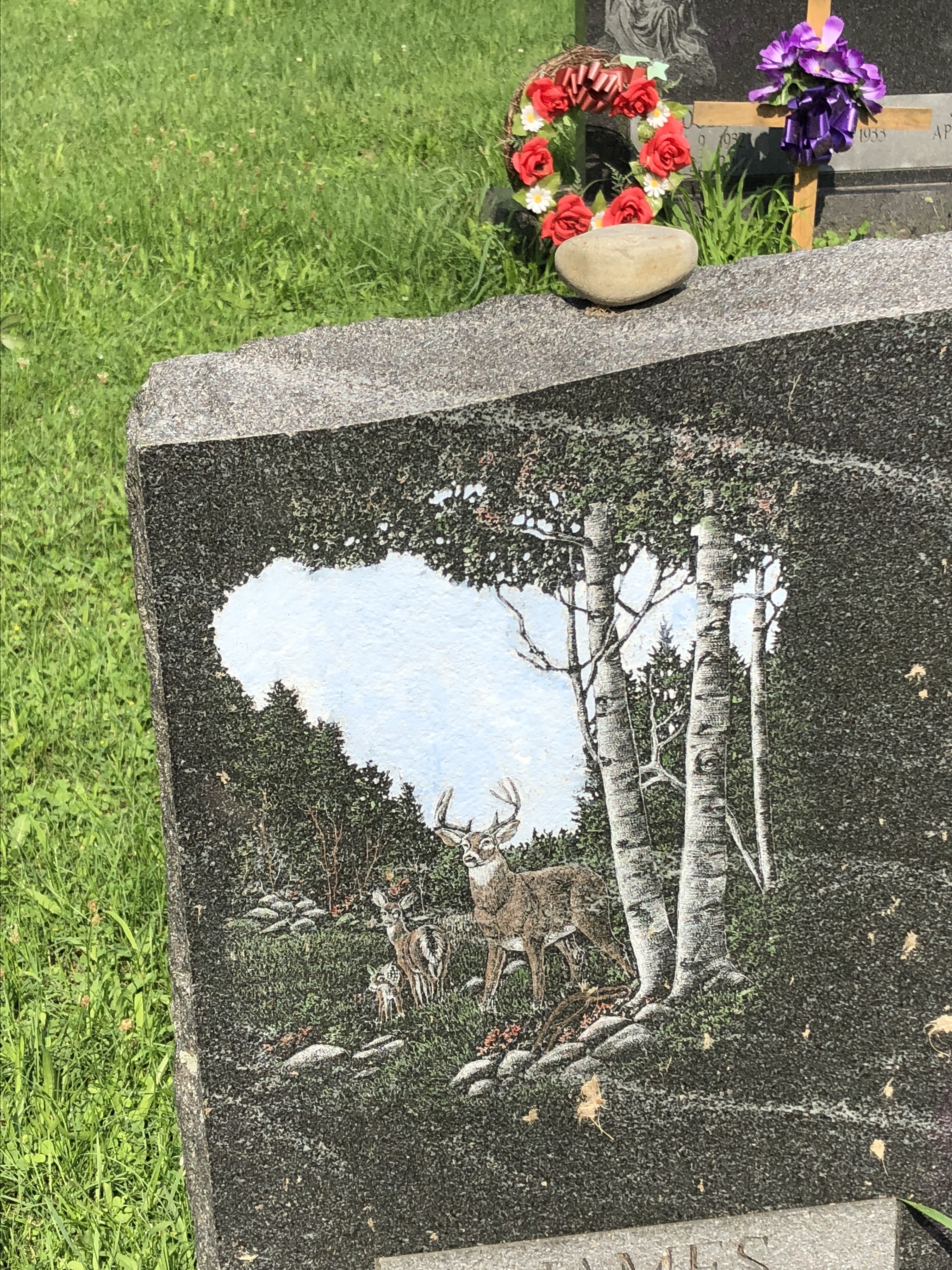Paintball in the cemetery? Details matter.

Black headstone with “paintball splotch” – just to the left and behind the headstone flanked by American flags
How much do details matter? Quite a lot if you actually want your audience to understand what you’re doing.
I thought about that during this morning’s walk in the cemetery. I’ve always felt sad passing one headstone—it looks like someone hit it with paintball gun. There’s a giant blob of white on one side of the black granite stone, with white streaks running down from it.
I haven’t noticed any other acts of vandalism—unless you count family members planting tinsel whirlygigs around grandma’s grave—and I wondered why no one had bothered to clean it up. It felt disrespectful to me.
Today I took a closer look at the stone.

It’s not vandalism; it’s art. Well, at any rate it’s not vandalism.
The splotch turns out to be sky; the drips are birch trees. The family of deer, invisible from a distance, look out at the viewer. Is it my imagination, or does Daddy Deer-est have a disgusted look on his face?
The view from afar does not match the up-close reality. Or to put it another way: details matter.
Details matter in writing, too
From time to time, I’ve written corporate applications to those “best companies in the world” surveys. Details matter there too. A lot.
My clients would ask me to write about this nifty program they have, so I’d ask them for information. I’d get PowerPoints explaining the need the program filled; I’d get one-sheets outlining the steps people needed to take to access the program. I’d get everything except the detail the contest sponsor specifically requested: how do the employees feel about it? How did it improve their lives at work, if indeed it did.
Sometimes the thousand-yard view is not the most illuminating. In the case of the contest submission, I’d always want to zoom in closer. Not to the details of how the program works—that’s important to the company, but not to the end user. No, I needed to get a microscopic view of the program. How it works at the smallest, most personal level.
If my submission were this headstone, the contest sponsor would need to see the deer. Everything else is just background noise.
Are you writing what your audience needs to know? Or are you writing what you want to tell them? Sometimes a Venn diagram of those two perspectives would completely overlap; other times, they might barely touch each other.
When in doubt, write for your readers. What do they need to know? Tell them that consistently. Show them the whole picture, because details matter.